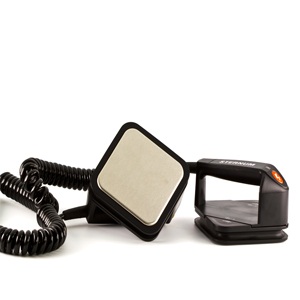
The idea is to safely stitch electricity-converting materials directly onto the surface of the heart, lungs and diaphragm to draw upon the endless power that is naturally produced as each organ continuously contracts and relaxes.
The result would be a never-ending supply of juice that researchers say will eliminate the current need for invasive, risky and expensive battery-replacement surgery.
Operations to replace batteries
"Once a pacemaker's battery is depleted, you have to perform an operation to replace it," said study co-author John Rogers, a professor in the departments of bioengineering and materials science and engineering at the University of Illinois. "The same is true of many kinds of devices, and it's obviously not ideal.
"Over the years, people have been thinking a lot about many different possible ways we could harvest power from the body itself," Rogers added. "Some have looked at glucose [breakdown], others at the exploitation of tiny temperature changes in the body. We focused our effort on the energy generated by motion. And now, by working with living cows, sheep and pigs, we have been able to demonstrate that this can work."
Rogers and his colleagues discussed their findings in the issue of the journal Proceedings of the National Academy of Sciences.
Power harvested from the body
To explore motion-produced electricity, the study authors relied on the dynamics of "piezoelectricity". This refers to the ability of certain materials to build up an electrical charge when exposed to pressure.
In this case, the material at hand was lead zirconate titanate, or PZT, a so-called "nanoribbon" substance that is film-thin and completely flexible and bendable.
The research team placed strips of PZT on thin, flexible plastic. The end result, Rogers said, was plastic-wrap-like sheets with a total thickness equivalent to about one-third of a piece of paper.
The energy-harvesting sheets were then sutured onto the surfaces of the hearts, lungs and diaphragms of living cows, sheep and pigs, whose organs are about the same size as human organs.
Such PZT attachments did not appear to interfere in any way with the normal function of the targeted organs, Rogers and his colleagues said. And after linking the PZT sheets to both AC/DC conversion devices and micro-batteries, the researchers were able to capture and store enough electrical power to meet or exceed the requirements of standard implantable devices.
More testing needed
"This won't be available for practical use anytime soon," Rogers said. "We did show it works in the real world, but this was only in animal models. We have not yet operated any device for an extended period of time with the chest closed and the animals no longer anaesthetised."
Rogers said more research is needed before the device can clear regulatory hurdles. One concern is how well the body reacts to a foreign material.
"I don't see any biocompatibility issues so far, and I am optimistic," Rogers said. "But we have to show long-term viability in animals before they ever go into humans. So far we have shown it lasts for... half a day or so, but we will have to show that this method will generate sufficient electricity for at least a decade, because if not, there's no point."
Predicting the outcome
Although the findings of the new study appear promising, scientists note that research involving animals often fails to produce similar results in humans.
For his part, Daniel Inman, chairman of the department of aerospace engineering at the University of Michigan, said his own work in the field has given him a firm belief that body-generated energy will eventually be a reality with broad practical applications.
"The technology is certainly viable," Inman said. "Yes, there are risks. For instance, with the pacemaker example, we clearly have to know for certain... the device won't fatigue and fail any faster than a battery-powered device."
"And biocompatibility has to be a top priority," he said, "because we all know the body can reject things, and we have to work to address any such concerns."
"Having said that, there's no question that there's certainly a need and demand," Inman said. "As anyone who has to undergo an operation every seven or 10 years to have a dying battery replaced knows, surgery is a big deal. If you tell them this method would mean they don't have to do that anymore, that is something they definitely want."
Picture: Defibrillators from Shutterstock
Read more:
Defibrillators in public places saves lives




 Publications
Publications
 Partners
Partners















